Abstract
A patient is described whose most striking visual disorder was a grossly impaired ability to discriminate between different colours (hues) that were matched for brightness. In contrast his ability to discriminate between different neutral greys presented in the same fashion was much less abnormal, even though the greys were perceptually difficult. Although visual acuity was reduced and visual fields were constricted, and the patient's memory was moderately impaired, these associated symptoms could not themselves be the cause of his unusual colour vision. The patient had the symptoms of cerebral achromatopsia, and the relative preservation of his form vision (when his reduced acuity is taken into account) and his achromatic vision supports the view that the many different visual cortical areas recently demonstrated in the brains of monkeys, and presumed to exist in man, have a perceptual specialisation that matches their physiological differences.
Full text
PDF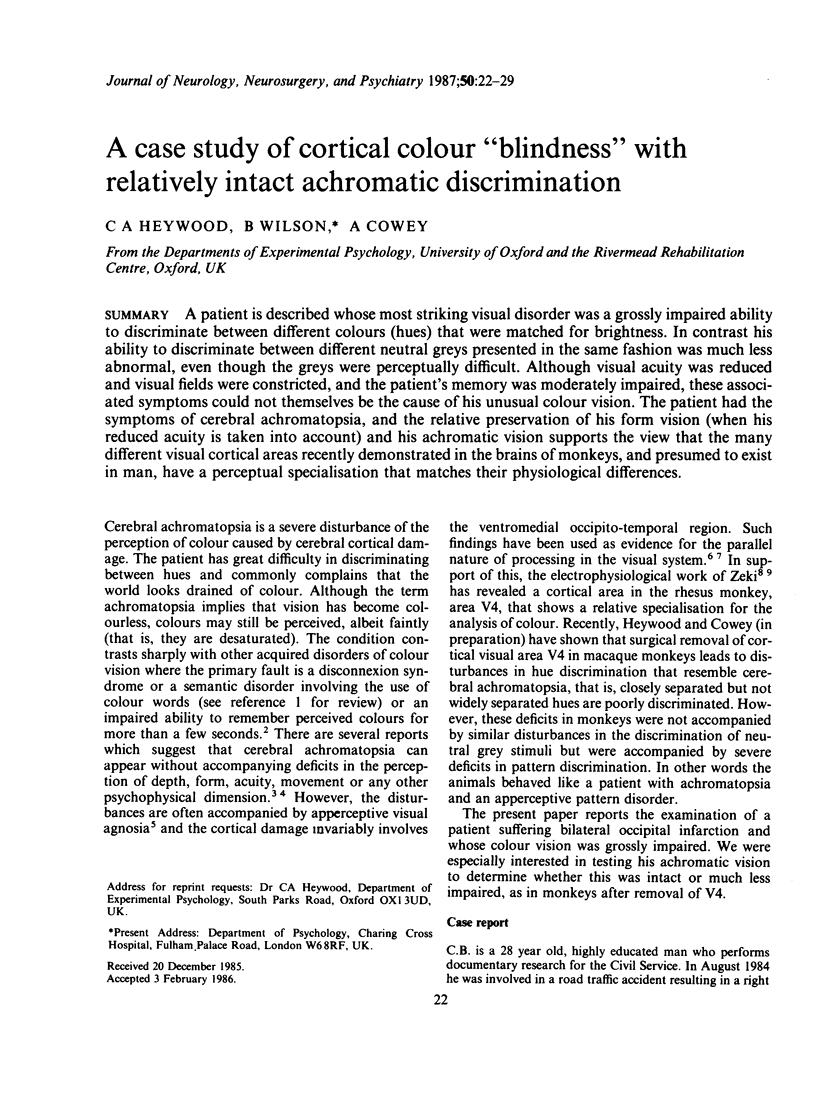
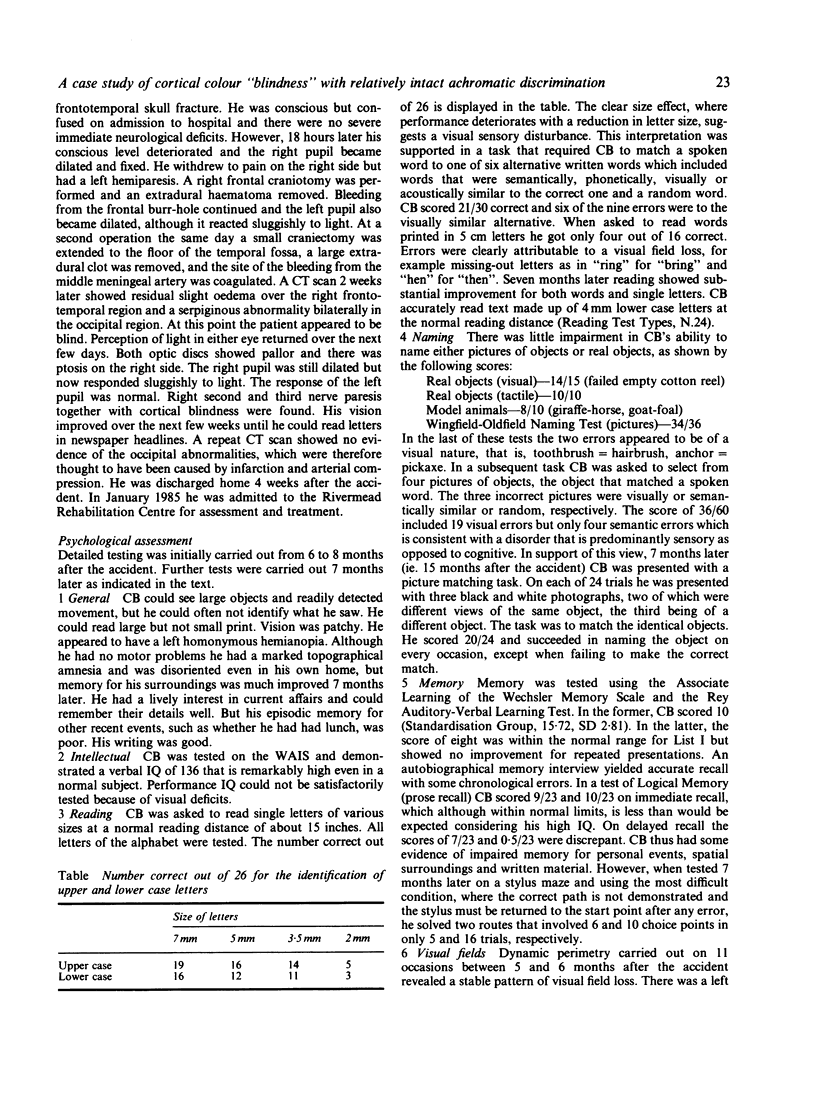
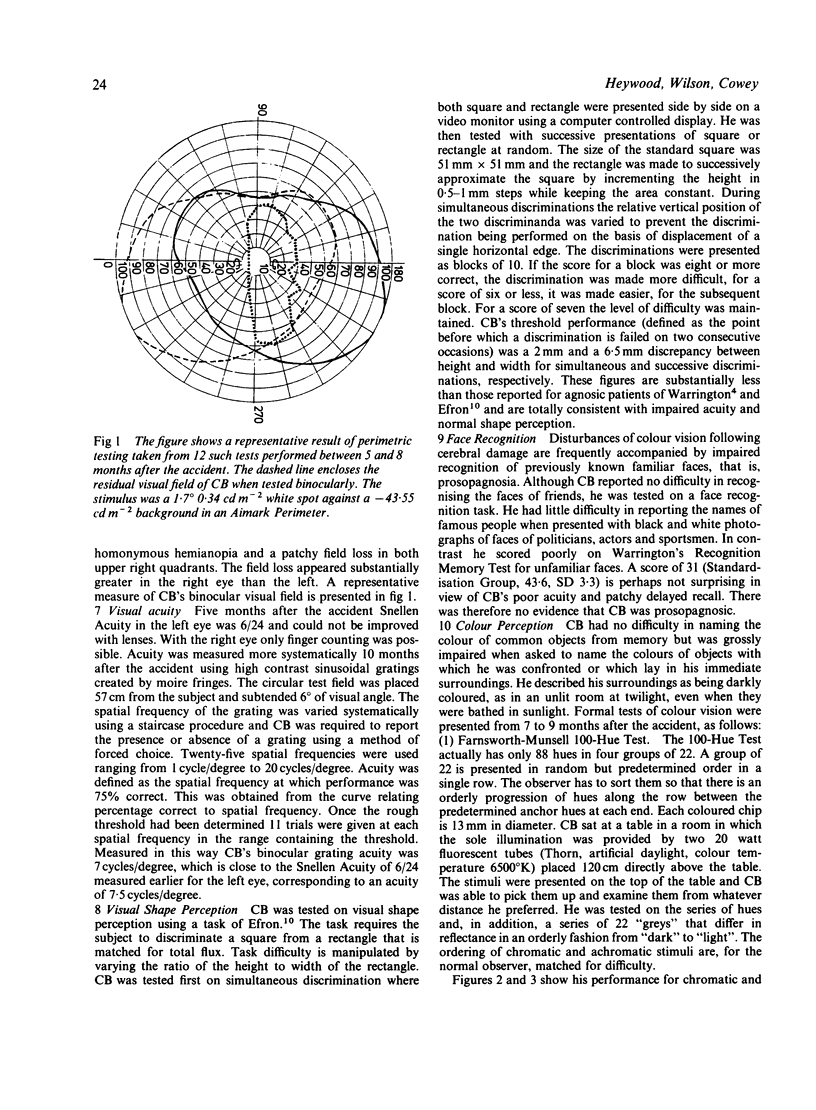
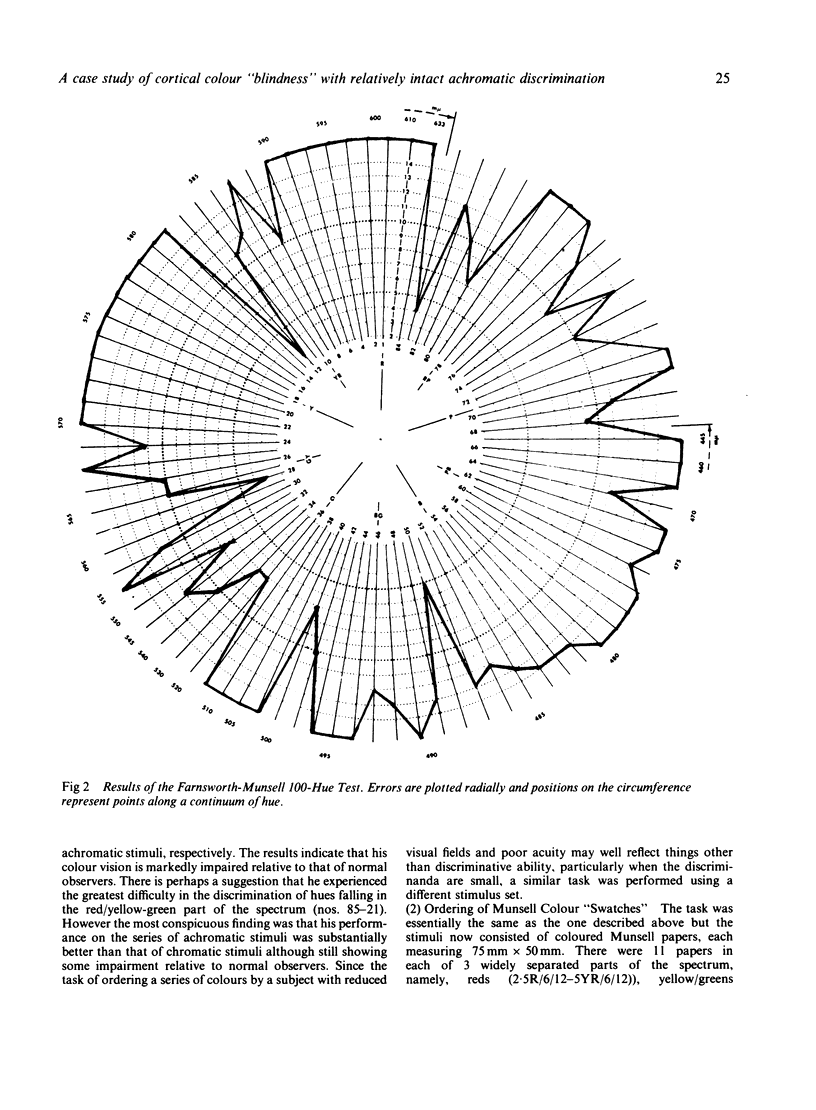
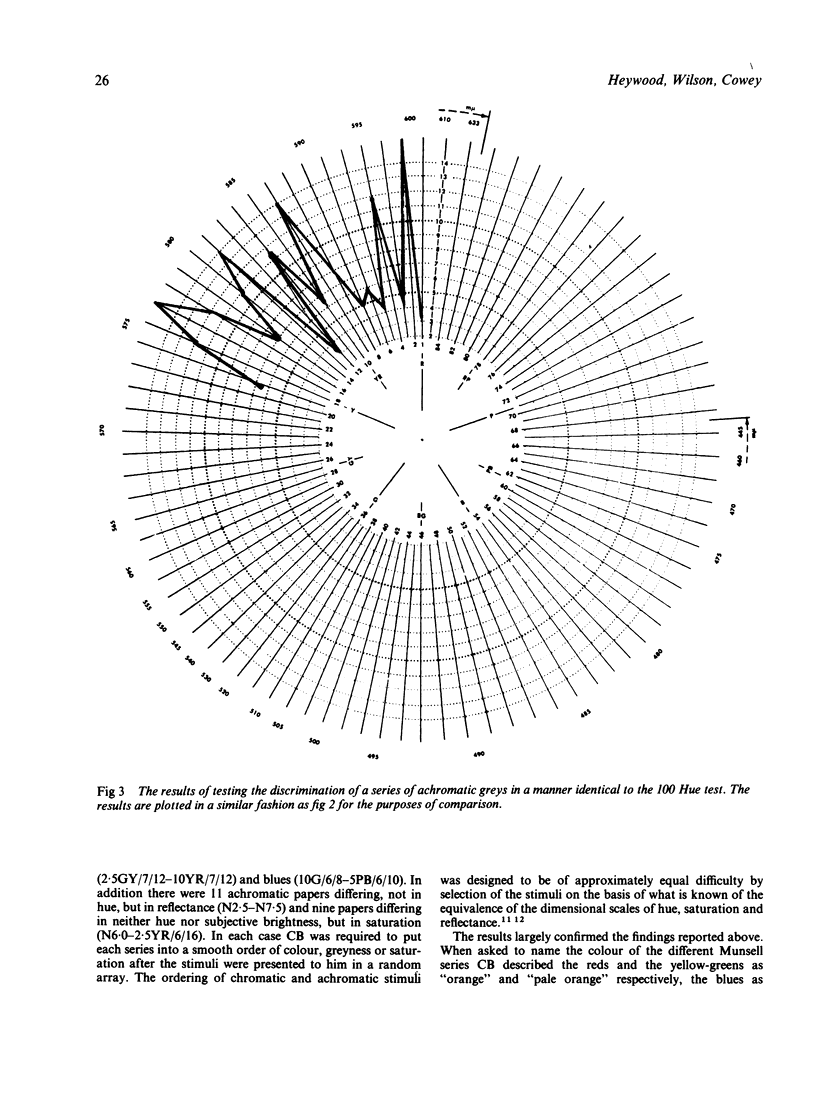


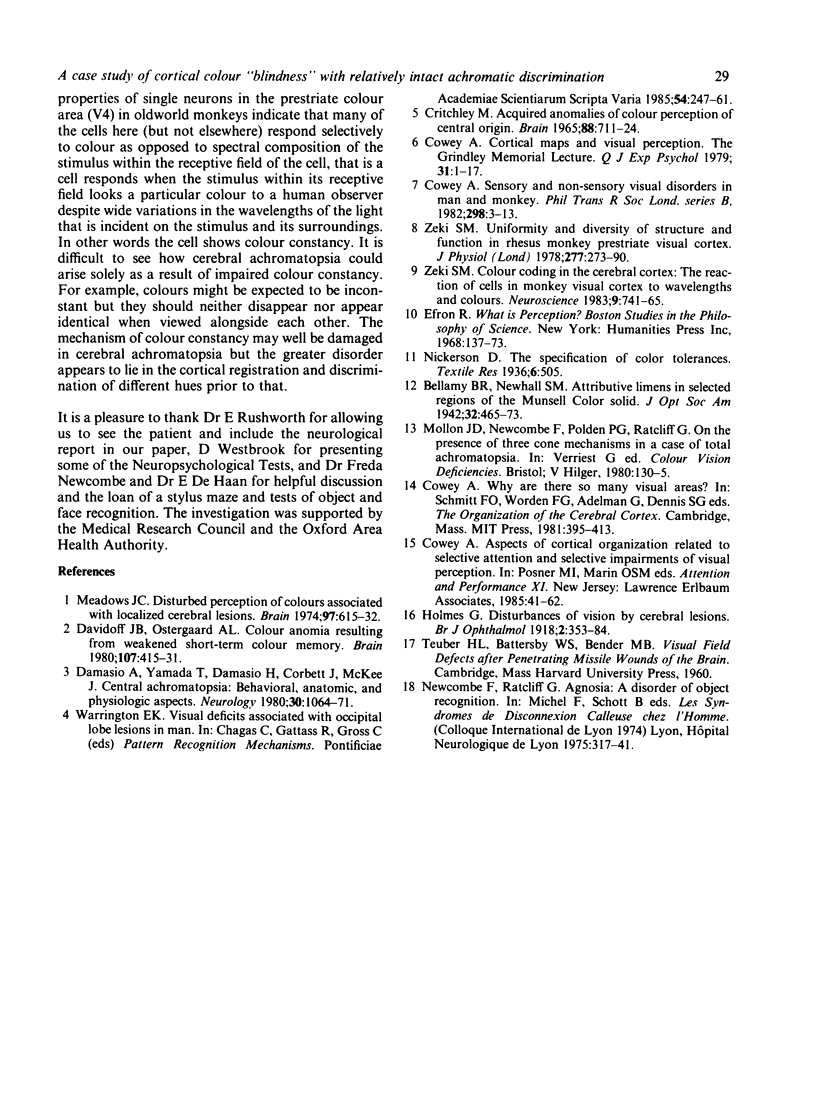
Selected References
These references are in PubMed. This may not be the complete list of references from this article.
- Cowey A. Cortical maps and visual perception: the Grindley Memorial Lecture. Q J Exp Psychol. 1979 Feb;31(1):1–17. doi: 10.1080/14640747908400703. [DOI] [PubMed] [Google Scholar]
- Cowey A. Sensory and non-sensory visual disorders in man and monkey. Philos Trans R Soc Lond B Biol Sci. 1982 Jun 25;298(1089):3–13. doi: 10.1098/rstb.1982.0068. [DOI] [PubMed] [Google Scholar]
- Critchley M. Acquired anomalies of colour perception of central origin. Brain. 1965 Nov;88(4):711–724. doi: 10.1093/brain/88.4.711. [DOI] [PubMed] [Google Scholar]
- Damasio A., Yamada T., Damasio H., Corbett J., McKee J. Central achromatopsia: behavioral, anatomic, and physiologic aspects. Neurology. 1980 Oct;30(10):1064–1071. doi: 10.1212/wnl.30.10.1064. [DOI] [PubMed] [Google Scholar]
- Davidoff J. B., Ostergaard A. L. Colour anomia resulting from weakened short-term colour memory. A case study. Brain. 1984 Jun;107(Pt 2):415–431. doi: 10.1093/brain/107.2.415. [DOI] [PubMed] [Google Scholar]
- Holmes G. DISTURBANCES OF VISION BY CEREBRAL LESIONS. Br J Ophthalmol. 1918 Jul;2(7):353–384. doi: 10.1136/bjo.2.7.353. [DOI] [PMC free article] [PubMed] [Google Scholar]
- Meadows J. C. Disturbed perception of colours associated with localized cerebral lesions. Brain. 1974 Dec;97(4):615–632. doi: 10.1093/brain/97.1.615. [DOI] [PubMed] [Google Scholar]
- Zeki S. M. Uniformity and diversity of structure and function in rhesus monkey prestriate visual cortex. J Physiol. 1978 Apr;277:273–290. doi: 10.1113/jphysiol.1978.sp012272. [DOI] [PMC free article] [PubMed] [Google Scholar]
- Zeki S. Colour coding in the cerebral cortex: the reaction of cells in monkey visual cortex to wavelengths and colours. Neuroscience. 1983 Aug;9(4):741–765. doi: 10.1016/0306-4522(83)90265-8. [DOI] [PubMed] [Google Scholar]


